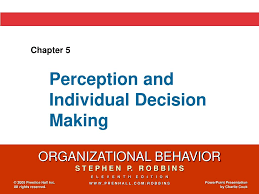The Concept of Marginal Decision Making
When it comes to decision making, the concept of marginal decision making plays a crucial role in determining the best course of action. Marginal decision making involves analyzing the additional benefits and costs of making a small incremental change in a current situation.
Essentially, marginal decision making focuses on evaluating the impact of a specific change on the overall outcome. By considering the marginal benefits and costs, individuals and businesses can make more informed decisions that maximize their resources and achieve optimal results.
One key aspect of marginal decision making is the principle of diminishing returns. This principle states that as more resources are allocated to a particular activity, the marginal benefit derived from each additional unit decreases. By understanding this concept, decision makers can determine the point at which further investment may not yield significant returns.
Furthermore, marginal decision making allows for flexibility and adaptability in decision-making processes. By assessing incremental changes, individuals can adjust their strategies based on changing circumstances and make more effective decisions in dynamic environments.
In conclusion, marginal decision making is a valuable tool for individuals and businesses seeking to optimize their choices and resources. By carefully evaluating the marginal benefits and costs of each decision, stakeholders can make informed choices that lead to better outcomes and increased efficiency.
Understanding Marginal Decision Making: Key Questions Explored
- What is marginal decision making?
- How does marginal decision making differ from other decision-making approaches?
- Why is marginal decision making important in economics?
- Can you provide an example of marginal decision making in everyday life?
- What role does the principle of diminishing returns play in marginal decision making?
- How can businesses benefit from implementing marginal decision making strategies?
- What are some common challenges associated with using marginal decision making?
What is marginal decision making?
Marginal decision making refers to the process of evaluating the additional benefits and costs associated with making small incremental changes in a current situation. It involves analyzing the impact of a specific change on the overall outcome and considering the marginal benefits and costs to make informed decisions. By focusing on the marginal effects of each decision, individuals and businesses can assess the value of each incremental change and determine the best course of action to maximize their resources and achieve optimal results.
How does marginal decision making differ from other decision-making approaches?
Marginal decision making differs from other decision-making approaches by focusing specifically on the incremental benefits and costs of a small change in a current situation. Unlike traditional decision-making methods that may consider overall costs and benefits, marginal decision making hones in on the additional impact of a specific adjustment. This approach enables individuals and businesses to make more precise and targeted decisions by evaluating the marginal effects of each option. By analyzing these incremental changes, marginal decision making allows for a more nuanced understanding of the potential outcomes and helps determine the optimal course of action based on the specific context and circumstances at hand.
Why is marginal decision making important in economics?
Marginal decision making is crucial in economics because it allows economists to analyze the incremental changes in benefits and costs associated with each decision. By focusing on the marginal benefits and costs of a particular choice, economists can determine the most efficient allocation of resources and optimize decision-making processes. This approach helps in evaluating trade-offs, understanding the impact of small changes on overall outcomes, and maximizing utility or profit. In essence, marginal decision making provides a systematic framework for economic analysis that enables policymakers, businesses, and individuals to make informed choices that lead to better resource allocation and economic efficiency.
Can you provide an example of marginal decision making in everyday life?
In everyday life, a common example of marginal decision making can be seen in the context of deciding whether to work an extra hour for overtime pay. By weighing the additional income earned against the opportunity cost of sacrificing personal time and potential fatigue, individuals engage in marginal decision making to determine if the marginal benefit of earning extra money outweighs the marginal cost of increased effort and time commitment. This type of analysis allows individuals to make informed decisions that align with their priorities and goals, illustrating how marginal decision making is a practical approach that can be applied to various aspects of daily life.
What role does the principle of diminishing returns play in marginal decision making?
The principle of diminishing returns plays a significant role in marginal decision making by highlighting the concept that as more resources are allocated to a particular activity, the marginal benefit derived from each additional unit decreases. This principle serves as a critical factor in determining the optimal allocation of resources and helps decision makers identify the point at which further investment may not yield significant returns. By understanding the principle of diminishing returns, individuals and businesses can make informed decisions that maximize their resources and achieve optimal outcomes while avoiding inefficiencies and resource wastage.
How can businesses benefit from implementing marginal decision making strategies?
Businesses can benefit significantly from implementing marginal decision making strategies by optimizing resource allocation and maximizing efficiency. By carefully evaluating the marginal benefits and costs of each decision, businesses can identify opportunities to increase profitability and improve overall performance. Marginal decision making allows businesses to make informed choices about where to allocate resources, whether it’s in terms of production, marketing, or investments. This strategic approach enables businesses to adapt quickly to changing market conditions and make adjustments that lead to better outcomes. Ultimately, by incorporating marginal decision making into their strategies, businesses can enhance their decision-making processes and achieve sustainable growth in a competitive business environment.
What are some common challenges associated with using marginal decision making?
When it comes to using marginal decision making, there are several common challenges that individuals and businesses may encounter. One of the main challenges is accurately assessing the marginal benefits and costs associated with a decision, as this often requires detailed analysis and data that may not always be readily available. Additionally, determining the point of diminishing returns can be difficult, as it requires a clear understanding of when further investment or resources may not yield significant additional benefits. Another challenge is the potential for overlooking long-term consequences in favor of short-term gains, which can lead to suboptimal decisions in the long run. Overall, navigating these challenges requires careful consideration and strategic thinking to ensure that marginal decision making leads to positive outcomes.




